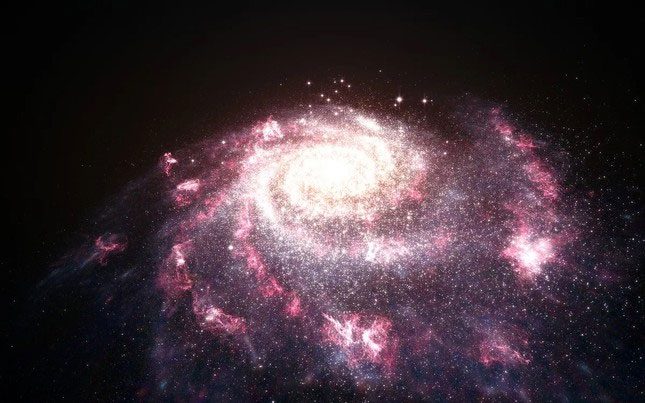Astronomers Explain the James Webb Space Telescope’s Discovery of a Mysterious Galaxy Group Threatening Cosmology.
The galaxies detected by the James Webb Space Telescope (JWST) are among the earliest formed, appearing just 500 million years after the Big Bang. They shine so brightly that, theoretically, their existence seems impossible. These primordial galaxies formed in a remarkably short time compared to the overall timeline of the universe.
This discovery threatens to upend physicists’ understanding of galaxy formation and even challenges the standard model of cosmology.

Illustration of a chaotic galaxy undergoing bursts of star formation. (Photo: ESA, NASA, L. Calçada)
Using Supercomputer Simulations
Now, a group of researchers using supercomputer simulations suggests that these galaxies may not be as large as previously thought – they might simply be unusually bright.
“Typically, a galaxy is bright because it is large. How could these massive galaxies have assembled so quickly? Our simulations show that galaxies do not struggle to achieve this brightness at the dawn of the universe,” said senior study author Claude-André Faucher-Giguère, an astrophysicist at Northwestern University.
Current accepted theories suggest that these first proto-galaxies reached their teenage years around 1 to 2 billion years into the universe’s life, forming dwarf galaxies that began to merge into larger galaxies like our own.
This makes the JWST’s discovery of thousands of unusually bright primordial galaxies, some resembling our own, a surprising revelation for astronomers. It raises serious doubts about their fundamental understanding of how the universe evolved.
To investigate what might have given these galaxies their strange luminosity, researchers created a galaxy formation model and ran it through a supercomputer, simulating the swirling gas in the early universe as it transformed into stars and subsequently formed galaxies.
By carefully calculating the mass, energy, momentum, and chemical composition of the young universe, the researchers discovered that stars during this early period might have formed in sudden bursts, quickly after long periods of silence. This phenomenon, known as “starburst formation,” differs from the steady star formation rate observed in today’s universe, potentially explaining why the early universe was so luminous.




















































